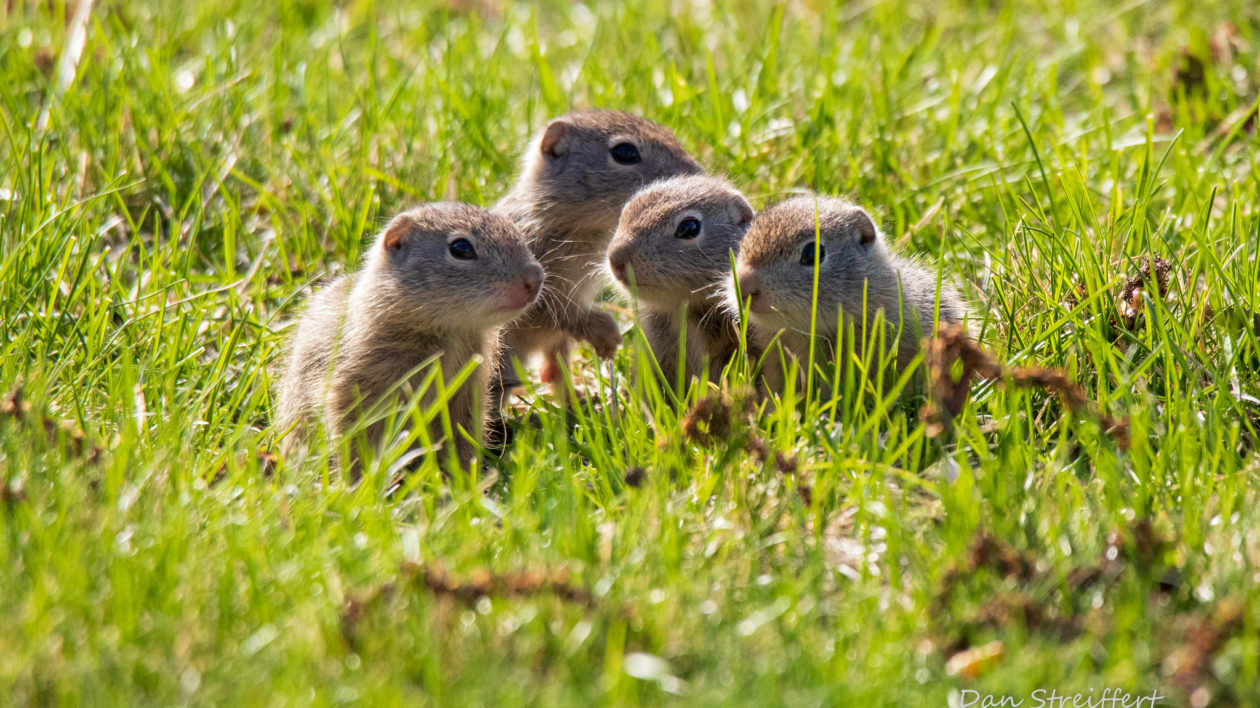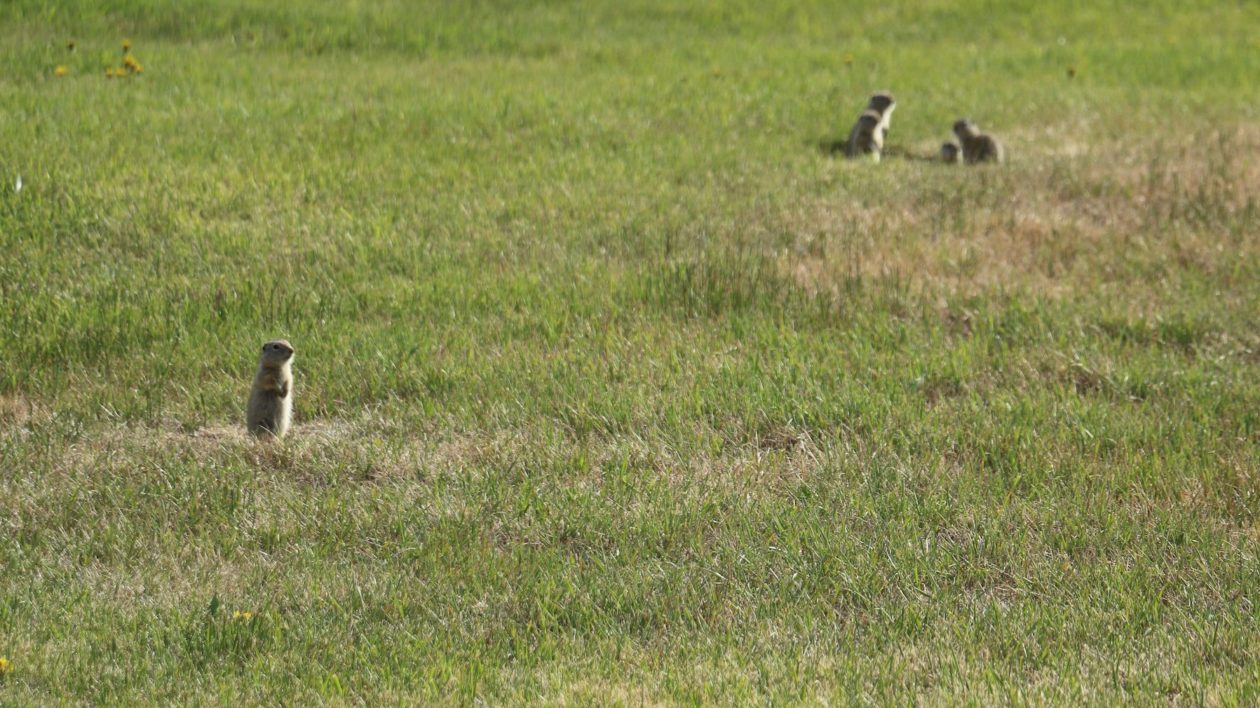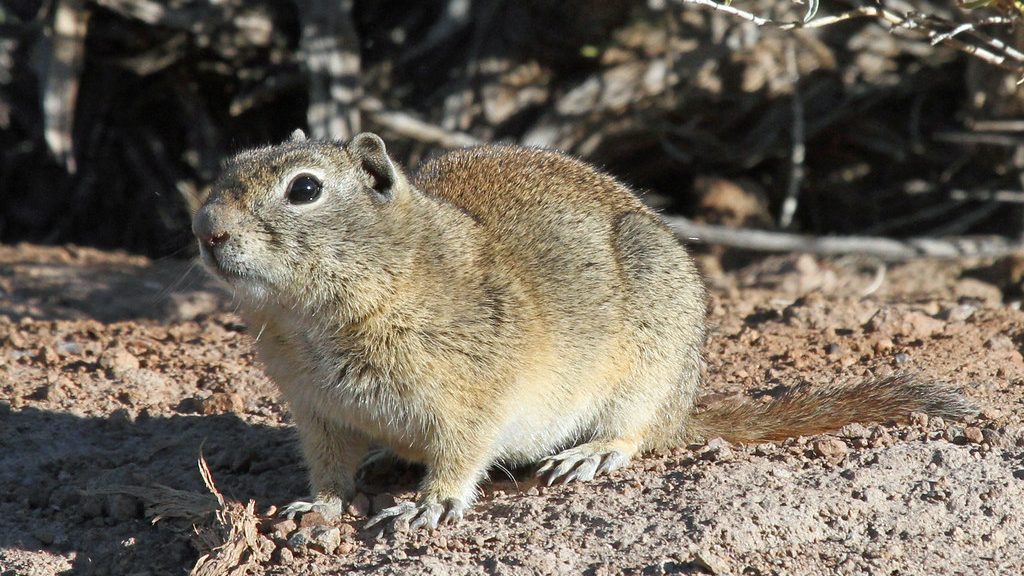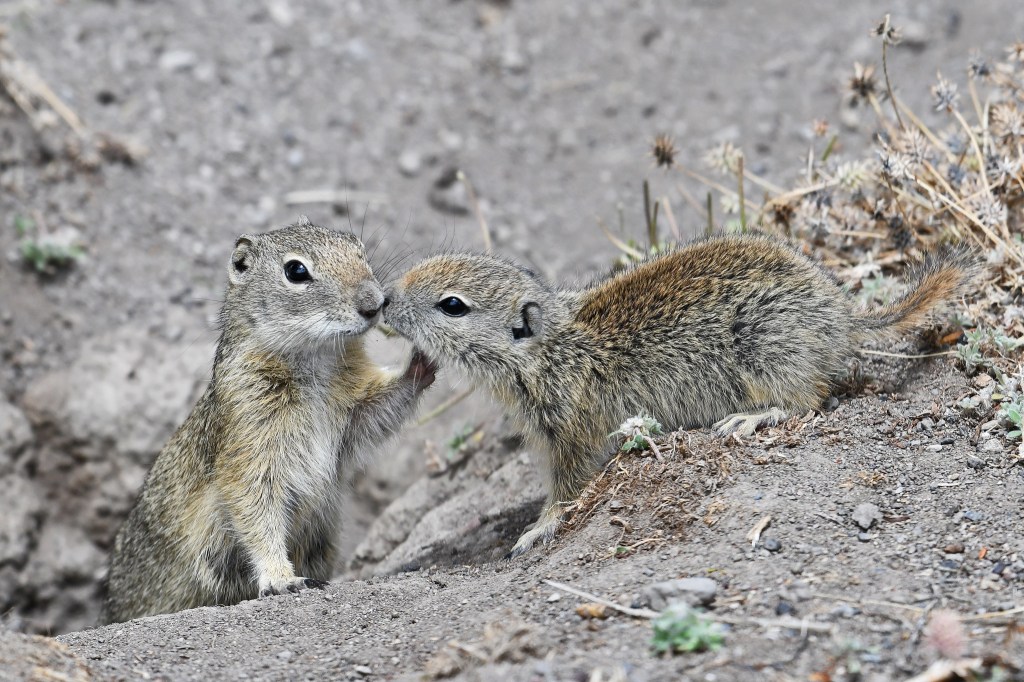In the corner of our campsite, where two wood beams meet, there’s a burrow. I suspect it’s a vole hole. My boys and I watch it while eating breakfast. We’re halfway through syrup-slathered pancakes and grease-coated bacon when a brown critter scurries out of the blackness with a worm. It’s not a robin or a vole. It’s a ground squirrel. It eats an inch of worm then checks its surroundings in frantic-scan mode. I’m not hunting it, but just about everything else in the wild is.
“A squirrel’s chance of survival is low. For every 50 I tag, only five survive,” says Jill Mateo, The University of Chicago, Department of Comparative Human Development associate professor. “They are like potato chips. Once a predator eats one, they have to eat more.”
The ground squirrel’s status as a choice menu item means they rely on safety in numbers. I start looking beyond our camp across the whole campground. There are five sites at most. Central Idaho’s Lemhi River, is nearby but beyond that, the rest of this valley is high desert. It’s the kind of terrain ground squirrels sleep through rather than live on.
Some species of ground squirrels, which are larger than chipmunks and smaller than prairie dogs, hibernate for up to nine months a year. Their extended sleep routine settles their heart rate to one beat per minute. That kind of slow-mo therapy shows promising advancements in the world of medicine for stroke patients with reduced blood flow. That’s why researchers are working on a drug that mimics ground squirrel hibernation. While that mystery is studied, another quirk comes up. Once deep hibernation ends in the summer, ground squirrels revive with sole purpose.
“The first thing they do out of hibernation is have sex,” Mateo says. “Summer is short and babies have to have time to get fat so when females come out, it’s pandemonium. We want a handle on who is who before that happens.”

Mateo started studying ground squirrels in 2002. She knows Idaho ground squirrels find one mate then guard that mate while Belding’s ground squirrels just want to sire the majority of the offspring and don’t guard mates. Belding’s, most common in Oregon and California, are Mateo’s specialty. How ground squirrels recognize relatives is her focus. Her research starts with a bottle of hair dye in the eastern Sierra near the California-Nevada border.
“Lady Clairol, blue-black. That was a nice one,” she says. “I mark the males with a number or a letter on their back that I can see from far away.”
Then she watches the colony play the wild’s version of kissing tag, only the squirrels aren’t really kissing. It just looks like they are. From my campsite, I quickly figure out what Mateo looks for. I see a crunchy brown field of expired meadow and it’s pocked with holes. Out of each hole pokes a head. When another squirrel comes near, the two heads go cheek to cheek. This is no kiss. It’s an odor check.
“When two squirrels come together, the first thing they do is what I call nose-nose,” Mateo says. “It looks like they’re kissing, but they’re not. They’re smelling. There’s a gland embedded in the skin in the corner of their mouth. Even if they’ve never encountered a relative before, they’ll smell a relation by that gland and avoid inbreeding.”

Odor I.D. prevents inbreeding, but it also promotes nepotism. Not all Belding’s ground squirrels in a colony are related, but the ones that are receive preferential treatment. If a female knows kin is nearby, she’s more likely to play family hero.
“If a ground squirrel is going to do something that gets it killed but saves relatives, it needs to know if that’s really a relative,” she says. “A good example is an alarm call. It’s costly because it draws the predator to the caller, but it saves the relatives who run to safety.”
Research in the 1970s told Mateo why ground squirrels do what they do, but it didn’t tell her how. That’s why she started marking males with hair dye and watching the nose-nose routine in the field. She advanced the odor gland theory in a controlled setting by wiping whiskers with Q-tips. She couldn’t smell a thing, but she could tell the ground squirrels could.
“More distant kin have less similar odor and non-distant don’t share odor at all,” Mateo says. “That’s true for siblings as well. Siblings have similar odors, but parents don’t. Adopted siblings don’t share similar odors because they don’t have the same genetic background even though they live in the same house.”

While various types of ground squirrels use odor for recognition, not all types use it the same way. Idaho ground squirrels don’t show preference to kin like the Belding’s ground squirrels in California and Oregon do. Mateo knows this by how long the recognition ritual goes on. What’s familiar isn’t sniffed for long. What’s new gets more attention.
“Just like with babies who look at new things longer,” she says. “In animals, something new in smell is paid more attention to. The difference in smelling time and distance in relation correlate.”
While the ground squirrels I’m watching in Idaho don’t show family favor, they still recognize relatives even after hibernating for nine months. They won’t mate with family, but they often won’t alert family either. That’s why the one eating a worm scurries quietly back into its hole when the shadow of a raptor passes over camp. But, in this case, it doesn’t alert the rest of the colony in the meadow.




Thank you for the interesting info.
Fascinating. We have a type of ground squirrel on the Hayward Shoreline. My dog delights in chasing them – never can catch one – and I don’t have to worry about him climbing a tree in his excitement like he will with tree squirrels since they go to ground! Thanks for all the facts about these fascinating burrowers!
THANK YOU, KRIS. THIS WAS INTERESTING & MUCH FUN!